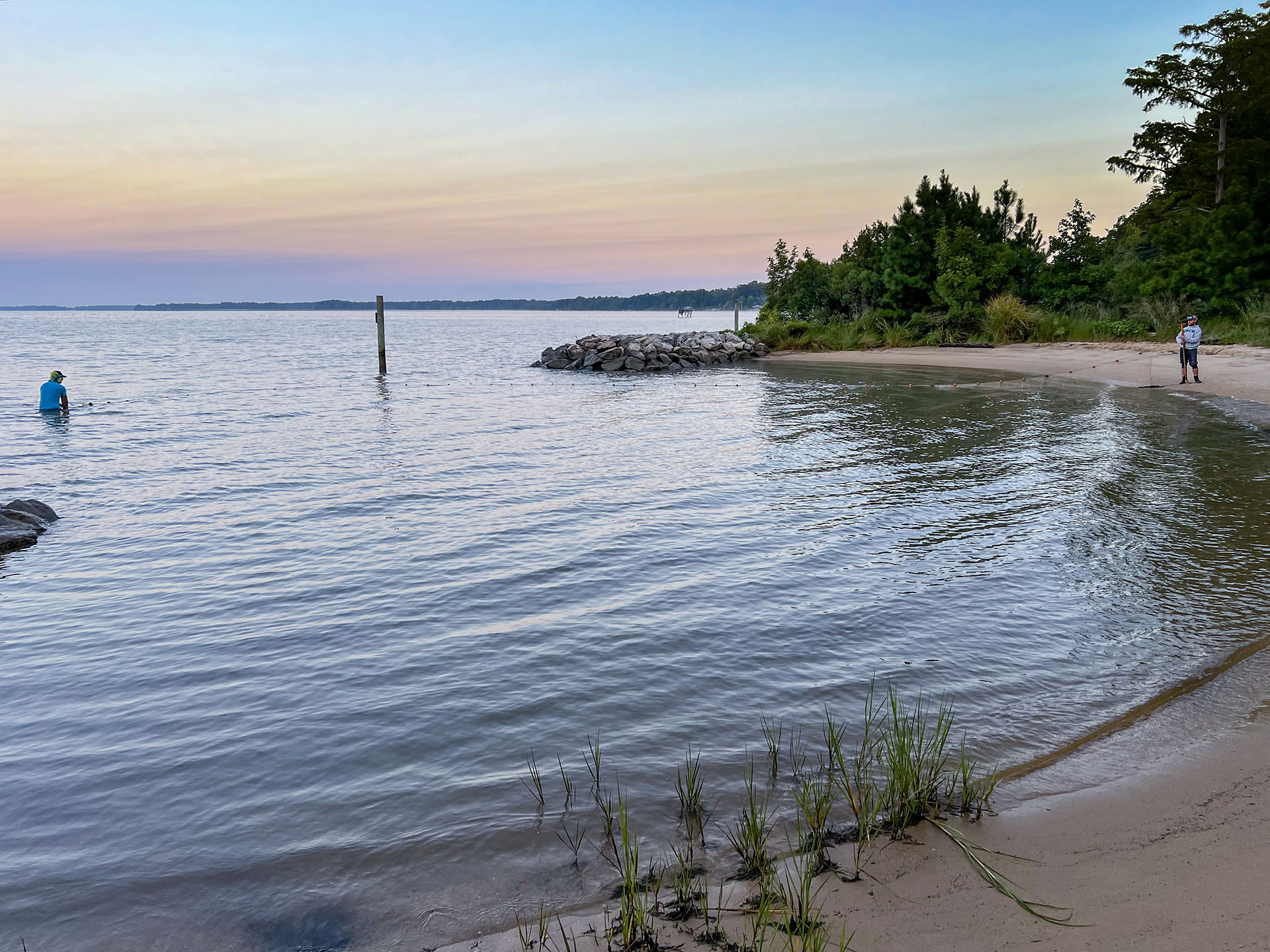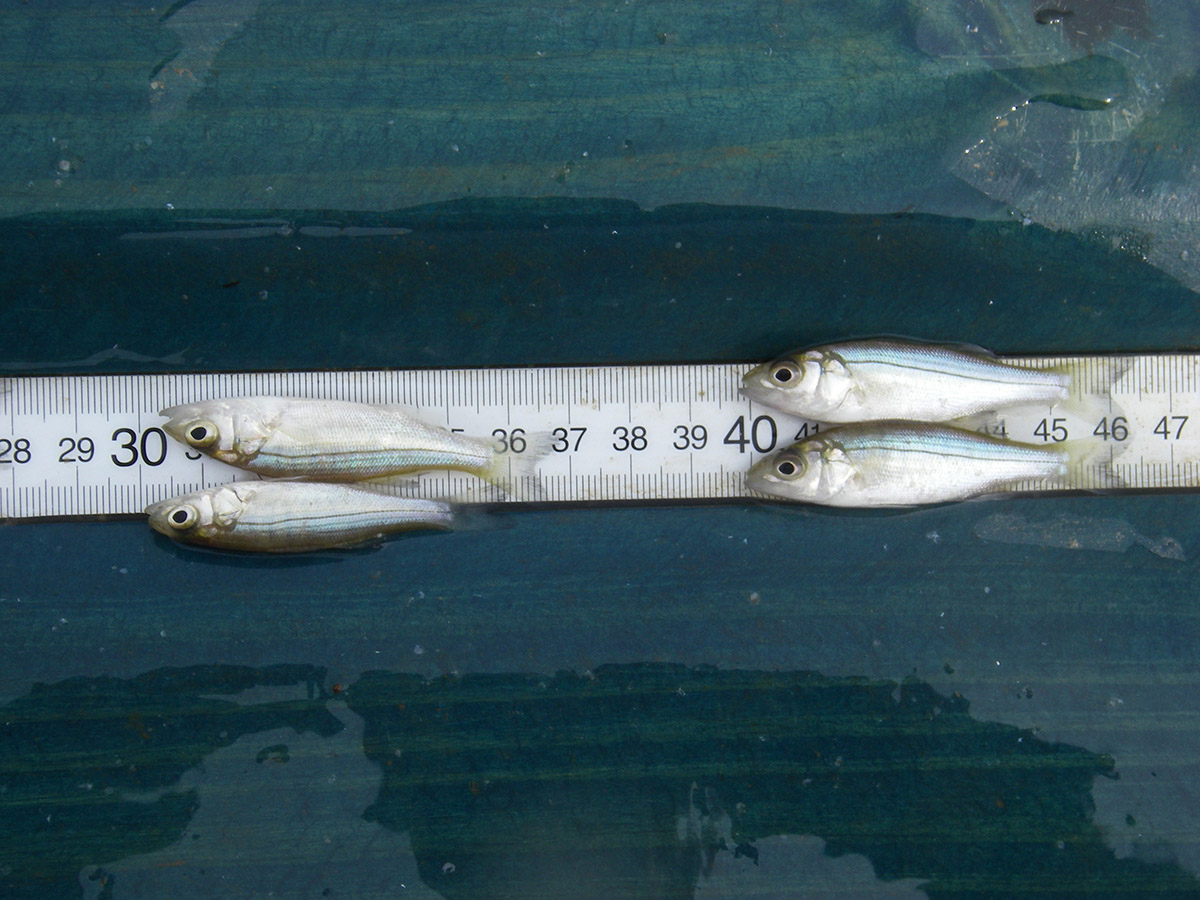Study suggests decline in striped bass nursery habitat in the Chesapeake Bay

A new study by researchers at William & Mary’s Batten School & VIMS suggests that a loss of suitable nursery habitat for striped bass in the Chesapeake Bay may be contributing to lower numbers of juvenile fish.
According to the results of the 2024 Juvenile Striped Bass Seine Survey, striped bass in Virginia are experiencing the second year in a row of below-average recruitment, or the number of new fish entering the population. This year’s survey recorded a mean value of 3.43 fish per seine haul in the Virginia portion of the Bay, significantly lower than the historical average of 7.77. Maryland recorded its sixth consecutive year of poor recruitment.
 Each spring, striped bass spawn the Bay’s shallow tributaries and females lay their eggs in tidal freshwaters . After a few days, the eggs hatch and the juvenile fish spend their first summer near the shores of the rivers in which they were hatched.
Each spring, striped bass spawn the Bay’s shallow tributaries and females lay their eggs in tidal freshwaters . After a few days, the eggs hatch and the juvenile fish spend their first summer near the shores of the rivers in which they were hatched.
“Striped bass are one of the most studied fish in the Chesapeake Bay. We have a solid understanding of the environmental conditions that are important for survival from the egg to the larval stage, but we don’t have as firm of a grasp on what happens in their juvenile stage,” said Rachel Dixon, a Ph.D. student at the Batten School of Coastal & Marine Sciences and lead author on the study. “We wanted to see if the availability and quality of these shallow, nearshore habitats could be a factor that impacts how many juveniles survive and mature to the adult population.”
Using advanced modeling techniques based on historical environmental data, Dixon and her colleagues quantified the extent of suitable nursery habitat throughout the Chesapeake Bay for 1996-2017. They compared these models to decades of population data and found several water quality metrics, including salinity, temperature, current speed and dissolved oxygen content, to be important factors for juvenile fish.
“This study steps back and looks at the long-term picture to understand what might be occurring environmentally to account for the changes we’re seeing in the abundance of juvenile striped bass,” said Fabrizio, who oversees Virginia’s annual Juvenile Striped Bass Survey and serves as Dixon’s academic advisor at the Batten School. “Habitat is important for growth. And if you don’t have good growth at a young age, theoretically that can lead to higher mortality rates and fewer adults.”
The data showed that the proportion of shorelines areas that are suitable for juvenile striped bass is similar in Maryland and Virginia. However, approximately half of the 10 major spawning areas recorded decreases in suitable habitat during the study period. One bright spot was the Upper Chesapeake Bay, which showed an increase in early summer habitat.
Different regions of the Bay, such as the Potomac River and smaller tributaries on the eastern shore, were identified as critical areas for striped bass production due to their relatively greater proportion of shallow shoreline areas that provide suitable habitat.
“Even though the amount of suitable habitat has declined since 1996, we’re not seeing a direct impact on the overall population just yet. However, we did observe a pattern of higher numbers of juvenile fish in years with greater extent of suitable habitat,” said Dixon. “It appears that habitat is playing an important role in the survival and production of juvenile striped bass, but it’s likely one of many factors influencing the population.”
Water quality and other environmental factors have long been thought to influence the striped bass population in Chesapeake Bay. However, this study emphasizes the importance of conditions in shallow water environments along shorelines, which are the first to experience the effects of nutrient runoff and land development.
“These are really important habitats, not just for striped bass but also for other fishes in the Chesapeake Bay,” said Dixon. “We hope these findings encourage continued conservation and restoration of these environments.”
